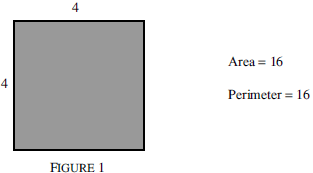No CrossRef data available.
Article contents
Emmental squares are tasty
Published online by Cambridge University Press: 08 February 2018
Extract
A shape is called equable if its area and perimeter are numerically equal relative to some given system of units. For example, if a square is equable, then its side, a, must satisfy 4a = a2. So there is only one equable square, and it has side 4.

It is easy to investigate this idea for other shapes. Though not connected with this problem, the work of Imre Lakatos suggested a generalisation to us. Lakatos showed that Euler's classical formula V + F = E − 2 for polyhedra could be extended when the notion of tunnels was introduced [1].
- Type
- Articles
- Information
- Copyright
- Copyright © Mathematical Association 2018




